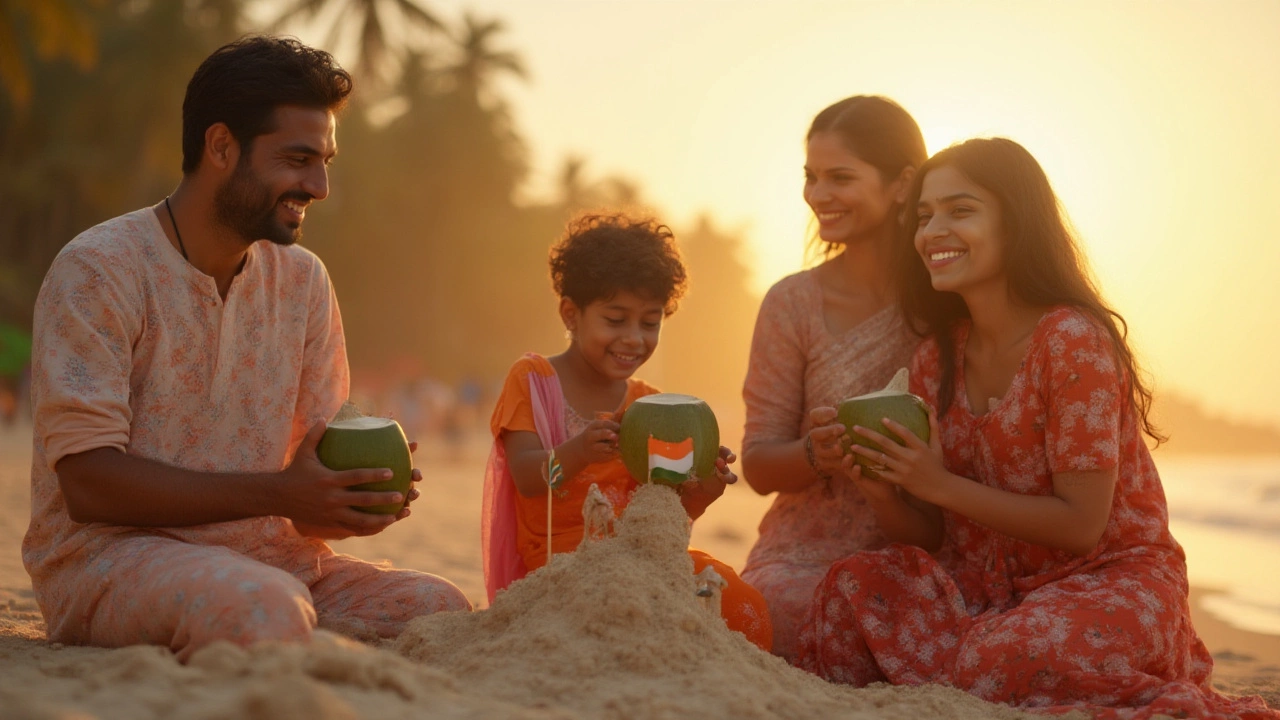Dreaming of turquoise waters and powdery beaches, but your bank account keeps echoing 'maybe later'? You’re definitely not alone. The Maldives has an endless stream of swoon-worthy Instagram shots, but its reputation for being wallet-draining is legendary. India, on the other hand, sits high on the list for budget travelers and luxury seekers alike. But just how much pricier is the Maldives than India? And is that reputation for sky-high holiday bills justified?
Breaking Down the Real Travel Costs: Maldives vs India
The first thing you’ll notice when you start trip planning is the jaw-dropping difference in daily expenses between the Maldives and India. And not just the five-star OTT resorts in the Maldives—basic costs like ferry rides and simple food can leave you with sticker shock if you’re used to rupees. The gap widens even further when you factor in India’s sprawling range of prices: you can live royally for pennies, or splurge like a Bollywood star. Let’s look at concrete numbers so you’re not just relying on rumors or random blog posts.
| Expense | Maldives (USD/day) | India (USD/day) |
|---|---|---|
| Budget Stay (Hostel/Guesthouse, 1 person) | 40 - 60 | 6 - 15 |
| Midrange Hotel (2 people, per room) | 120 - 250 | 28 - 60 |
| Luxury Resort/Night | 400 - 2000+ | 100 - 400 |
| Local Meal | 6 - 12 | 1.5 - 5 |
| Taxi (5 km ride) | 7 - 15 | 1 - 3 |
| Inter-Island Ferry/Train | 5 - 35 | 0.5 - 15 |
| Activities (snorkeling, fort tours, etc.) | 40 - 100+ | 2 - 30 |
It’s hard to overstate the difference. Even in the heart of New Delhi or Mumbai, those ‘expensive’ Indian meals or hotels look laughably cheap next to Maldivian equivalents. There’s no denying it: the Maldives vs India cost debate is a landslide, with India taking the crown for value.
Hidden Costs Many Travelers Miss in the Maldives
Let’s get real about why the Maldives turns into a budget-buster for so many people. First, the country is made up of over a thousand islands, but only about 200 are inhabited. Most of the iconic water villas and luxury hotels sit on private islands. Once you book that fancy overwater bungalow, you can’t just wander off for a budget meal or a cheap bus. You’re basically stuck with resort prices for every sip of water (and let’s be honest, cocktails are a must with those sunsets). Taxes and hidden fees can also add 20-30% on top of what you see advertised. Even getting to your hotel can be a shock: seaplane transfers from Male can run up to $600 per person round trip.
Banking on local islands is smarter for budget travelers, but there are quirks. The Maldives is a Muslim country, so no alcohol is served outside resort islands. Beachwear rules are conservative on local beaches; bikinis are mostly for private or so-called ‘bikini beaches’ only. Budget guesthouses have sprung up on islands like Maafushi and Thulusdhoo, but prices—even for basics—are still much higher than India’s.
The Maldives’ high import costs trickle down to the tiniest purchases. Even bottled water can be double or triple what you’d pay elsewhere. ATMs? Few and far between outside Male, sometimes with eye-watering withdrawal fees. So planning cash in advance isn’t just a tip, it’s often a lifesaver.

How Far Your Money Goes in India
India wins the affordability game by a long shot. The sheer size and diversity of the country means there’s something for every wallet. Backpacker hostels across Rajasthan charge less than $8 a night, while guesthouses in Goa and Kerala hover around $12-$20. Street food? You can munch your way through pani puri, vada pav, or dosas for less than a buck. Even sit-down restaurants in touristy cities often serve full meals for under $5 per person. Local transport, from rickshaws to trains, costs next to nothing by global standards. Fancy a sleeper train from Delhi to Varanasi? Under $20.
Splurging takes you far, too. For $100-$200 a night, you can get heritage hotels, palace stays, or beachfront resorts that would cost triple or more in the Maldives. That number crunch really puts things into perspective. India’s luxury and midrange hotels are often staffed with one-on-one service but at a fraction of the cost you'd pay if you were in a resort in the Maldives or even Thailand.
If you’re chasing history, culture, or spirituality along with beach time, India’s coast—think Goa, Kochi, Gokarna, or Pondicherry—packs a lot more punch. Local excursions like fort tours, spice plantation visits, or guided hikes are usually less than $20. Even adventure sports like paragliding, surfing, or river rafting come in at budget-friendly rates.
Ways to Save Money in Maldives & India: Tips for Smart Travel
If the Maldives is really tugging at your wanderlust, don’t lose hope—there are ways to trim the costs. First: skip the luxury resorts for a few nights and stay on local islands. Maafushi, Guraidhoo, and Thulusdhoo are gaining popularity for guesthouses, some as low as $45 a night. These islands also offer public ferries (as long as you’re patient and time your trip right) for a fraction of the cost of speedboats or seaplanes.
Foodwise, eat where locals eat: simple cafes known as ‘hotaa’ serve hearty Maldivian curries, flatbreads, and fish dishes for $4-8. Book snorkeling trips, fishing excursions, or diving lessons with operators based on local islands, not resorts—that cuts your costs in half. Bring your own snorkel gear to avoid rental fees, and stock up on snacks before leaving Male.
Always check taxes and transfer costs before you book any Maldives hotel; sometimes a lower nightly rate is offset by steep extras. Visit during shoulder seasons (May-July or September-November) for better deals, although you might have a few rainy days.
For India, you get much more flexibility for a shoestring budget. Use train travel for long distances—the IRCTC website and app are invaluable. Overnight trains save you both time and hotel money. Prepaid auto-rickshaws are safer and cheaper than bargaining on the street, especially in big cities. Eat street food where crowds gather—high turnover keeps food fresh and safe. Avoiding alcohol in bars can cut your tab by half; local beer and spirits are affordable but often heavily taxed in tourist zones.
Consider booking domestic flights in India in advance for the best deals. Apps like Cleartrip and MakeMyTrip often have promo fares that get snapped up quickly. Lastly, bargain at local markets but keep it friendly; your rupees go a long way, and small tips are appreciated.

Which Should You Choose? Factors Beyond Budget
The Maldives isn’t just about price—it’s about the privacy, the sense of remoteness, and those spectacular blue lagoons you won't find anywhere else. If your dream is an overwater villa, candlelit dinners by the sea, or all-in-one honeymoon packages, nothing really beats the Maldives vibe. The country is safe, famously clean, and easy (if limited) to navigate, since most visitors just hop from Male to their resort by seaplane or speedboat.
But India comes with massive range: snow-capped peaks, jungle safaris, spicy street food, ancient forts, and spiritual experiences by the Ganges. Indian beaches don’t always match Maldives’ wow factor for sand and water, but there’s music, festivals, nightlife, yoga retreats, and color you just won’t find on a private island. Travel can be chaotic, but public transport and cheap flights make DIY adventures rewarding for those willing to embrace a little unpredictability—and a lot of magic.
For true luxury on a moderate budget, India stretches your rupees further, while the Maldives makes it easy to burn through a year’s savings in a week. But whatever you choose, one trip won’t be enough. Both are addictive for different reasons, whether you’re chasing peace or chaos, adventure or pure escapism. Your bank account will feel the difference, though, and that’s one travel truth no filter can hide.
